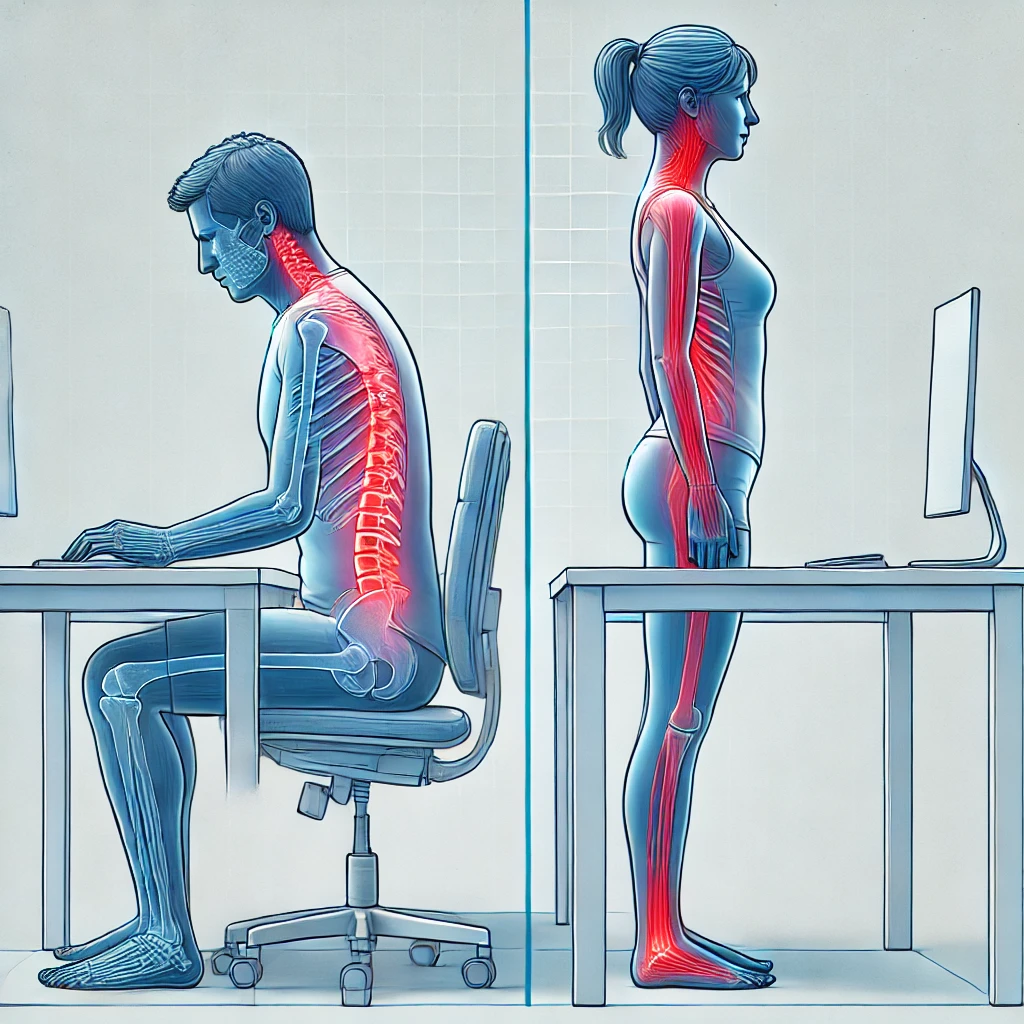“Your posture speaks volumes before you even say a word.”
Everything You’ve Been Told About Posture is Wrong
The way we think about posture is often too rigid—literally and figuratively. Posture is usually seen as a fixed position, something that’s either “good” or “bad.” But if you stand still for a moment, you’ll notice you’re never actually still. Your body is subtly shifting, adjusting, staying dynamic. In that way, posture isn’t a position to be held, but a temporary resting point in constant motion. Rather than chasing one idealized shape, like slouched or upright, what matters more is our ability to move between postures freely. Health comes from movement—movement brings blood flow, and blood flow supports healing. It’s when we get stuck in one shape for too long that the body starts to signal distress. So instead of fixing posture, we should focus on restoring our ability to move through a full spectrum of positions with ease.

How Our “Postural Set-Point” Leads to Poor Outcomes, Pain, and Tension
We all have what could be called a “postural set-point”—a kind of default position our body returns to when we’re not consciously moving. But this set-point isn’t necessarily the result of good biomechanics or ideal alignment; it’s shaped by our habits, injuries, emotions, and how we’ve learned to move—or not move—over time. If that resting posture is one where certain muscles are always on and others are consistently underused, we start to see imbalances that lead to tension, discomfort, and even chronic pain. The issue isn’t the posture itself, but the lack of variability. When the body is stuck in one pattern, it loses access to its full range of motion. That lack of movement leads to stagnation, reduced blood flow, and overworked tissues. Reintroducing movement, variety, and awareness can help shift that set-point and restore a more adaptable, resilient body.
The Role of Compensatory Patterns
When your posture is off, your brain creates new movement patterns to compensate. These are called “compensatory patterns,” and they’re a major cause of muscular tension and dysfunction. As highlighted through Neurokinetic Therapy (NKT), these neurological imbalances can cause one muscle to overwork while another becomes underused, building tension and increasing injury risk.
Simple Tips to Improve Posture Daily
- Take frequent breaks: Get up and move every 30–60 minutes if you sit at a desk.
- Move through many postures: One posture isn’t inherently worse than another. Being able to do both is better (see the video below)
- Stretch daily: A hip flexor stretch (like this one: An Uncommon Stretch: the iliacus)
- Standing desk: A desk that allows you to change from standing, to sitting, and back again with ease is best as it encourages movement and different positions, thereby increasing blood flow.
Wall Cogs – A Simple Reset using Postural Extremes
In the video below, I take Hugo through a quick exercise called the “Wall Cogs.” This drill is all about exploring postural extremes by coordinating the pelvis, ribcage, and skull like interlocking cogs. By intentionally tilting the pelvis, ribcage, and head in specific directions—like a posterior tilt of the pelvis with an anterior tilt of the ribs—you can help the body experience full ranges of motion it may have lost. It’s a simple yet powerful way to reset your postural set-point and bring awareness to how these segments move in relationship to each other. Give it a try!
Postural Based Pain? Let’s Get to the Root of It
If you’ve been dealing with unexplained tightness, stiffness, or discomfort, poor posture may be the hidden culprit. At Pain and Performance Solutions, we specialize in identifying these underlying movement issues and helping you return to a more balanced, pain-free life.
Call us today at (707) 636-4404 or use our online booking form to schedule a free phone consultation..